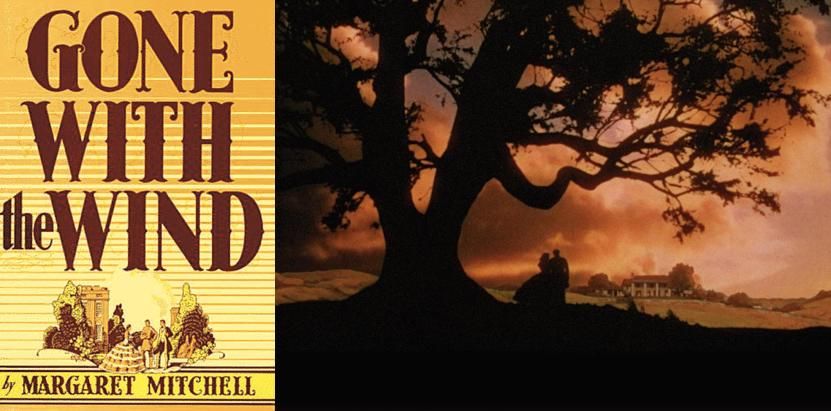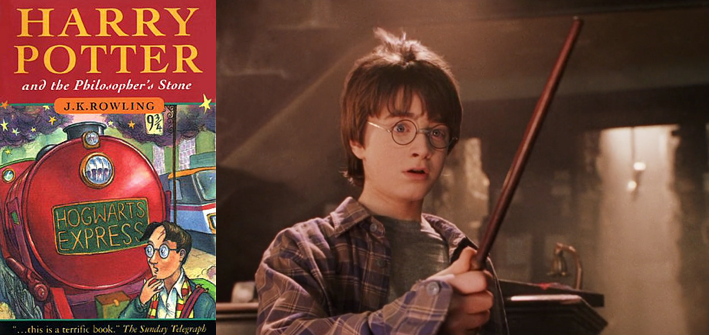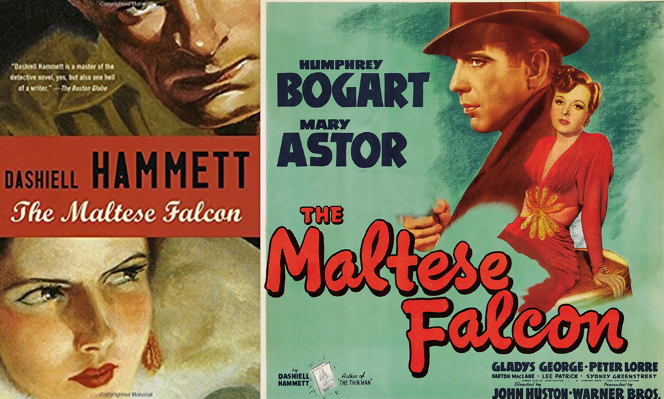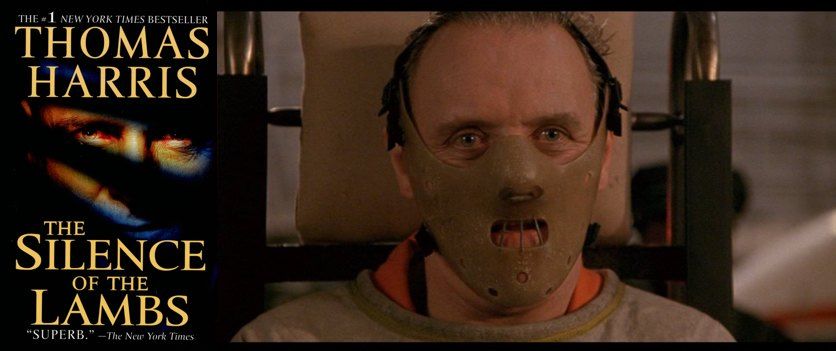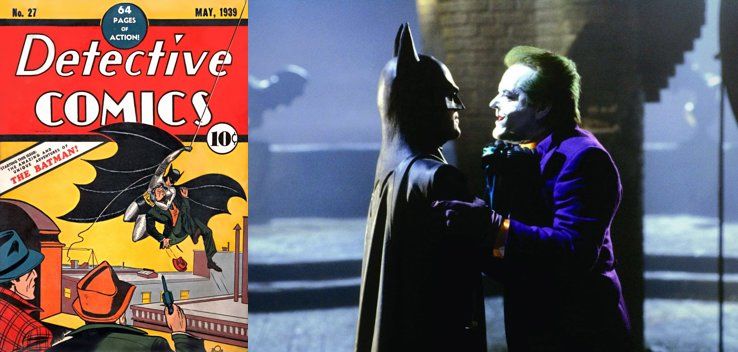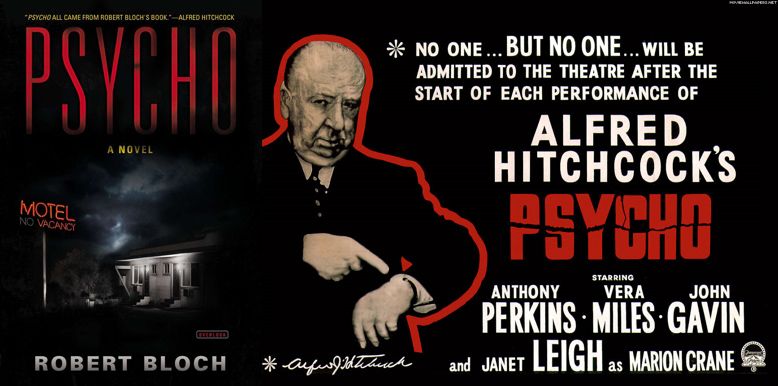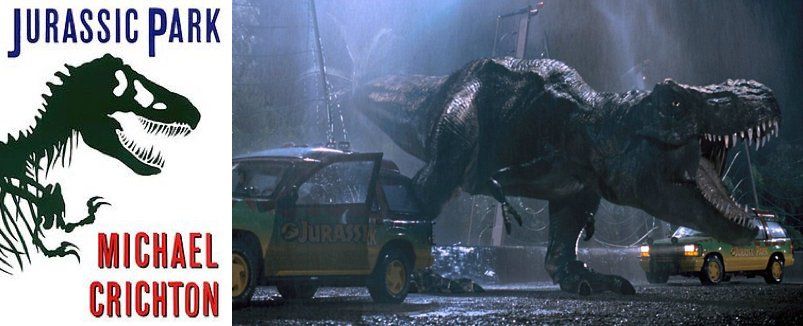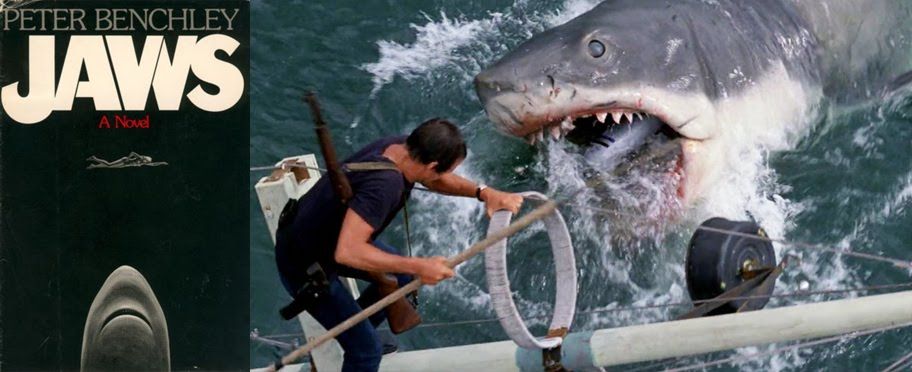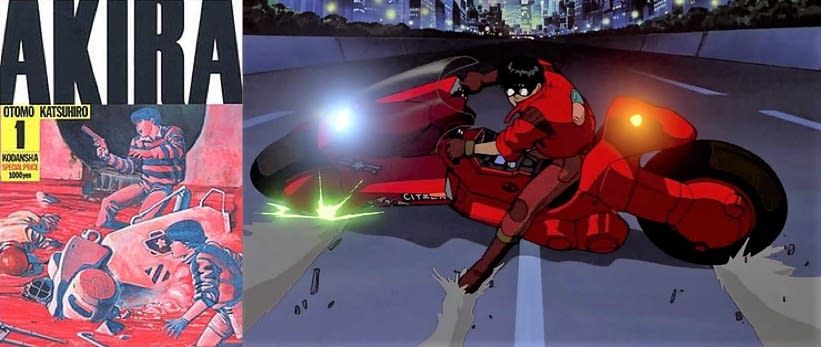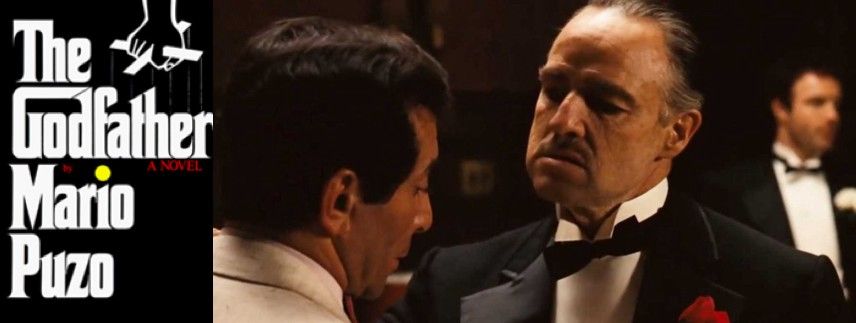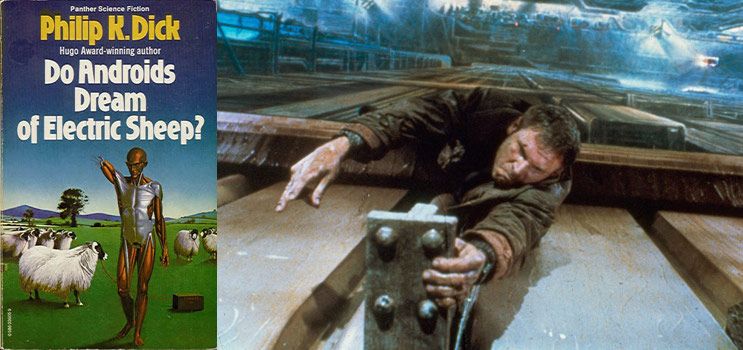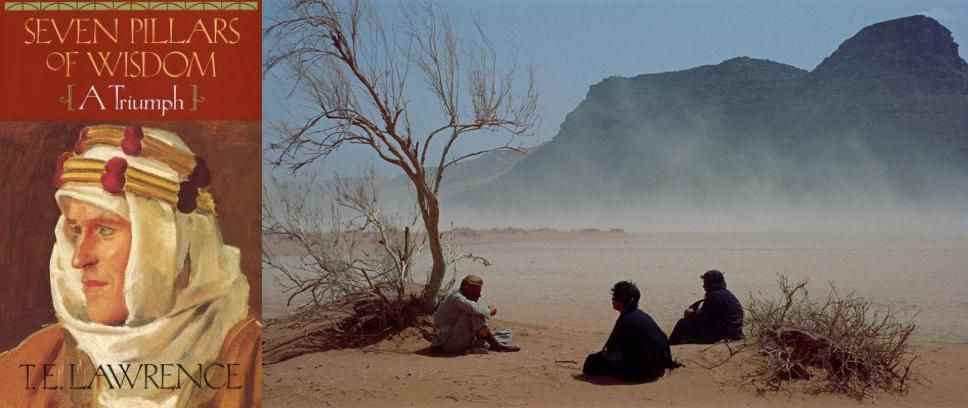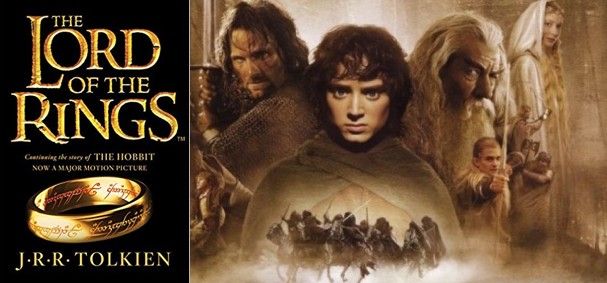A significant portion of all film adaptations constantly run the risk of either respecting the original source material or contradicting the story that it's meant to present to the audience. A film, if not based on an original screenplay, can be based on a novel, a comic book, a stage play or even a diverse collection of myths and legends originating from one culture or another.
Once the source material is secured by the studio, the filmmakers will then define the course of action of the entire production, from scriptwriting to the final cut. However, it can also be said that adaptations, by nature, fall into a special category due to their relation with their source material.
That being said, here are 15 famous stories that were adapted into groundbreaking films!
15 Gone With The Wind
Based on Margaret Mitchell’s novel of the same name, this 1939 period epic has become an iconic work from Hollywood’s Golden Age. The film was filled with incredibly detailed sets, grandiose costumes and larger-than-life performances. It tells the story of Scarlett O’Hara, the ambitious aristocratic daughter of a rich Southern planter. She's head-over-heels for the suave Ashley Wilkes, and she aims to win his heart during the Civil War.
Scarlett’s passionate encounters with the roguish Rhett Butler will define her character arc. Over the course of the film, the O’Hara family will go from prosperity to poverty, and then to rebuilding their fortune during the Reconstruction. Vivien Leigh stars as Scarlett. Leigh brings high melodramatic intensity to her character, while Clark Gable’s portrayal of Rhett shines with old-fashioned charisma. Filmed in Technicolor (which definitely wasn’t common in the 1930s), Gone with the Wind features extravagant imagery typical of big-budget spectacle for its time.
It’s worth noting that the film has been criticized over the past few decades for promoting a romanticized view of the Old South and the Civil War. The portrayal of African American slaves as loyal, happy-go-lucky servants hasn’t aged well at all. Also, the film’s melodrama and bombastic flair likely won’t resonate with modern-day audiences anymore.
14 Snow White And The Seven Dwarfs
This adaptation of the Grimm brothers’ classic fairy tale became an animation landmark after its release in 1937. Prior to Snow White, animation was limited to short films which were decidedly meant for children. If Mickey Mouse or Donald Duck cartoons could entertain adults and not just kids, they still showed how animation was in its infancy as a creative medium. Walt Disney also dominated the animation industry during the '20s and '30s. That is until Warner Bros. became his main competitor in the '40s with the creation of the character, Bugs Bunny.
Snow White turned out to be the first feature-length animated film in history. Challenging the technical and aesthetic limitations of the medium, Disney and his animators aimed to bring animation to a whole new level. The film truly pioneered feature-length animation, as seen with the films produced by Disney shortly afterwards. Films like Pinocchio, Dumbo and Bambi. Without Snow White, there never would’ve been The Jungle Book, The Lion King, or even more technologically advanced films like Toy Story or Shrek.
The film itself is still fondly remembered by many Disney fans. It may be somewhat old-fashioned and a bit out of touch with modern sensibilities, especially in the way it portrays its female protagonist. But its whimsical story and clean animation still stand the test of time.
13 Harry Potter
J. K. Rowling’s celebrated fantasy novels began to be published in the 1990s. After imagining the basis of the story during a delayed train ride, Rowling managed to complete the first book in the series, Harry Potter and the Philosopher’s Stone. Rejected by many publishers at first, the novel became an instant success upon its eventual release. Then, in the early 2000s, Hollywood’s interest in fantasy cinema was renewed with the massive success of The Fellowship of the Ring, the first installment of The Lord of the Rings trilogy.
Directed by Chris Columbus, the film version of Harry Potter and the Philosopher’s Stone was released in 2001.
Starring Daniel Radcliffe, Rupert Grint and Emma Watson in their first big roles, the film brought worldwide recognition to its three child stars. The film version of Harry Potter and the Chamber of Secrets was released shortly after in 2002. Whether fans had read the books or not, the films definitely increased the franchise’s popularity worldwide. Each of the other Harry Potter novels were adapted into a film, with the direction of the series carried out by many filmmakers from Chris Columbus to David Yates. And by the time Harry Potter and the Deathly Hallows was released in a two-part adaptation, fantasy cinema was changed for the better.
12 The Maltese Falcon
Dashiell Hammett became popular for stories such as The Thin Man and, most prominently, The Maltese Falcon. Hammett’s storytelling was defined by gripping prose and hardboiled characters who went solved treacherous cases in 20th century urban America. The Maltese Falcon told the story of Sam Spade, a San Francisco private eye who sets out to find a jewel-encrusted falcon for a gang of criminals. These criminals are suspected of being the ones who offed Spade's partner.
Published in 1930, the novel was adapted into a film in 1941. Directed by young maverick filmmaker, John Huston, the film starred Humphrey Bogart as Sam Spade. It triggered Bogart’s high-profile career, putting him in the limelight for future roles in other Hollywood classics like Casablanca and The Treasure of the Sierra Madre. It also managed to invent the new genre of film noir.
A stylistic evolution from the classic detective genre, film noir would be set in shadowy urban settings where crime lurked everywhere. The main character would be a rough, bitter investigator bent on solving a murky case without any clear answers. The supporting cast would be unreliable as well, featuring femme fatales and morally ambiguous foils. And none of this would have happened without John Huston’s The Maltese Falcon.
11 The Silence Of The Lambs
First published in 1988, Thomas Harris’ novel, The Silence of the Lambs, featured the cannibalistic, Hannibal Lecter, who would become one of fiction’s greatest villains. Lecter finds himself pitted against FBI agent, Clarice Starling, who is on a mission to find the criminal nicknamed “Buffalo Bill.” A massive success upon its publication, the novel was adapted into a film by Jonathan Demme in 1991, with Anthony Hopkins and Jodie Foster in the lead roles. The Silence of the Lambs film proved to be a tremendous hit with both audiences and critics.
It was only the third film in history to win Academy Awards in all the top five categories.
Namely Best Picture, Best Director, Best Actor, Best Actress and Best Screenplay. It was also the first Best Picture winner widely considered to be a horror film. But aside from its critical and commercial success, the film also set the stage for a new brand of horror cinema. A more psychologically chilling brand of horror that was in tune with modern-day sensibilities. The film also earned its place in history due to Hopkins’ exceptional performance. Lecter may only appear in a few scenes, but he truly shines in each of his delightfully creepy moments with Starling!
10 Batman
First appearing in Detective Comics #27 in 1939, Batman briefly started out as a dark comic book hero before he started to be written in a more kid-friendly way. From the comics trends of the 1940s and 1950s to the campy TV show of the 1960s, The Dark Knight had really strayed far from his initial roots. However, comics writers and artists became interested in re-imagining Batman as a dark, brooding adventurer of the night in the '70s .
Following that trend, a Batman film project was set in motion. Richard Donner’s Superman had already been released in 1978, bringing forward the concept of a big-budget superhero film made for a large audience. Batman obviously had to be produced very differently, which is how Tim Burton was brought on board to direct the film. Burton’s dark and haunting style seemed perfect to bring the world of Batman to life. Michael Keaton, in a surprising casting coup, was hired as Batman, while Jack Nicholson starred as the Joker.
An immense success upon its release, Batman further paved the way for superhero films, including three sequels (up until 1997’s infamous Batman & Robin). It was also a dominant influence on Hollywood’s modern marketing and development techniques of the superhero genre. Not even Superman could've envisioned such a legacy!
9 Psycho
The chilling story of Norman Bates was first conceived by Robert Bloch in his 1959 novel, Psycho. The story is said to have been inspired by the real-life criminal, Ed Gein, who actually lived not far away from Bloch in rural Wisconsin. Legendary suspense director, Alfred Hitchcock, soon became interested in adapting the novel into a film. His goal with the film was to depart from his previous hit, North by Northwest. Filmed on a low budget in stark black-and-white (whereas North by Northwest was filmed in vivid color) and with Hitchcock’s television crew, Psycho has clearly stood the test of time.
Now considered to be one of the director’s finest films, it has also been praised as a major work of cinematic art by many critics and scholars.
Of course, the film is mainly well-known for its iconic “shower scene,” which remains a technical masterwork in itself. But the film’s legacy should also be discussed in all of its importance. Psycho set a new level of acceptability for violence and deviant behavior in American films. This brought down the censorship system that was prevalent in Hollywood at that time. It’s also widely considered to be a precursor of the slasher genre. This means that without Psycho, there wouldn’t have been films like Halloween or A Nightmare on Elm Street!
8 Jurassic Park
Michael Crichton first imagined the idea of an amusement park filled with genetically recreated dinosaurs in his 1990 novel, Jurassic Park. The sci-fi story stood as a cautionary tale about the dangers of genetic engineering and the real world implications of trying to attempt it. Shortly before the novel was published, Universal Studios managed to secure the rights for a film adaptation. Steven Spielberg was then hired to direct the film, which was shot in Hawaii and California in 1992 and released in theaters shortly afterward in 1993.
Earning huge success at the box office and wowing critics and audiences alike, Jurassic Park has aged superbly and now stands as a seminal work of sci-fi cinema. The dinosaurs were created with groundbreaking computer-generated imagery (CGI) by Industrial Light & Magic. Also, life-sized animatronic dinosaurs were built by legendary visual effects creator, Stan Winston. The soundtrack also consisted of a mixture of various animal sounds for the dinosaur roars. This all ensured a wonderfully immersive experience for the audience, who were left greatly impressed at the sight of the dinosaurs emerging on the screen.
The film won three Academy Awards for its technical achievements in visual effects and sound design. It is also now considered to be a landmark in the development of CGI and animatronic visual effects and spawned a highly successful franchise.
7 Jaws
Peter Benchley’s noveln Jaws, was first published in 1974 and was based on the author’s own interest in shark attacks. This book about a great white shark preying upon a small resort town attracted a lot of media interest. Universal Studios managed to buy the film rights even before the novel was even published, aiming to produce it as a profitable adventure story. Steven Spielberg, by then a young emerging director, was hired to direct the film. After a notoriously difficult production, Jaws was released in 1975 to unprecedented success at the box office and critical praise.
It truly was the prototypical summer blockbuster that was released at a time where mainstream cinema went off into brand new directions.
Jaws was the highest grossing film up until 1977’s Star Wars and was celebrated for its gripping, suspenseful story. This was greatly due to its remarkable music and editing. Along with Star Wars, Jaws was crucial in establishing the modern Hollywood model. From now on, big-budget studio filmmaking would revolve around high box-office returns from action and adventure films. Using simple “high-concept” premises, these films would be released over the summer in thousands of theaters and supported by a heavy advertising campaign. From TV spots to tie-in merchandise, mainstream cinema has been following Jaws' lead ever since.
6 Akira
Based on Katsuhiro Otomo’s manga of the same name, this post-apocalyptic sci-fi film is now renowned as a landmark in animation. Directed by Otomo himself, Akira is set in a dystopian during the year 2019. It tells the story of chaos and rebellion in the sprawling futuristic city of Neo Tokyo. The story follows a teenage biker gang, characters with incredible telekinetic powers, and a military plot bent on shielding the mysterious figure known as “Akira.” The film does differ considerably from the manga, especially in its second half, although it keeps most of its character designs and settings.
Aside from its story, the film has earned its place in the animation pantheon due to the awe-inspiring quality of its animation. Prior to Akira, anime was notorious for cutting corners in its animation.A lot of artists would reuse the same shots over again, or have only the characters’ mouths move with basic lip sync while their faces stayed the same. Otomo and his team broke from this trend with detailed scenes, pre-scored dialogue, super-fluid motion, and even some CGI in a few specific scenes.
With the budget to conceive a fully realized Neo Tokyo, the filmmakers were able to make an animated experience with exceptional visuals. To this day, Akira remains a seminal influence on the anime industry and the rise of its popularity among Western audiences.
5 The Godfather
Based on Mario Puzo’s 1969 novel of the same name, The Godfather is now celebrated as the greatest cinematic achievement of all time by many critics. Paramount Pictures secured the film rights to Puzo’s book before it gained popularity. They hired maverick director, Francis Ford Coppola, to direct the film. Puzo wrote the screenplay alongside Coppola, transposing the dramatic story of the Corleone crime family from the page to the screen. The book was already noteworthy for introducing Mafia lexicon to English-speaking readers. Suddenly, a lot of people were introduced to terms like "consigliere," "caporegime" and "Cosa Nostra."
The film managed to take the book’s merits much further.
It relied on dark and atmospheric imagery, taut writing and exceptional performances to present the story to audiences. The character arcs of patriarch Vito Corleone and his son Michael, who goes from a reluctant outsider to a ruthless mafia boss, were portrayed in an exceptionally gripping way to the public. The Godfather became a milestone in New Hollywood cinema and set the stage for the modern gangster film genre. The star-studded cast, which included Marlon Brando, Al Pacino, James Caan and Robert Duvall, all became memorable for their unique performances. There wouldn’t have been the same idea of violent, brooding atmospheres in films if The Godfather hadn’t come along!
4 Blade Runner
Recognized as one of the greatest American sci-fi writers, Philip K. Dick published the novel Do Androids Dream of Electric Sheep? In 1968. The book had an intriguing premise of a dystopian future where androids are used for slave labor, and where bio-engineered animals are a symbol of prestige. The main character, a bounty hunter named Rick Deckard, is assigned to hunt down a group of fugitive androids, providing deep questions on what defines humanity.
After many years of development, with the writing process being particularly challenging, a film adaptation entitled Blade Runner was released in 1982. It was directed by Ridley Scott and released by Warner Bros. It initially earned little success at the box office. Some praised its themes and visual style while others criticized its unusual plot and pacing.
However, it later became an acclaimed sci-fi cult film and a leading example of neo-noir cinema, especially after the Director’s Cut was released in 1992. The Final Cut, released in 2007, proved to be the film’s ultimate vision for audiences to discover. Hailed for its unique production design, Blade Runner has become a powerful influence for many sci-fi films, video games, anime and TV series. It’s safe to say that Philip K. Dick probably couldn’t have imagined such a lasting legacy for his work!
3 Lawrence Of Arabia
A legendary figure in his own time, T. E. Lawrence was a British military officer who led the Arab Revolt against the Ottoman Empire during World War I. His epic adventures across the deserts of the Arabian Peninsula led him to write his memoirs, Seven Pillars of Wisdom. British director David Lean, best known for classic epic films like The Bridge on the River Kwai, became interested in adapting Lawrence’s story for the big screen. Released in 1962, Lawrence of Arabia became a huge success with critics and audiences. It remains one of the most influential films in the history of cinema.
Featuring stunning desert vistas, a dramatic soundtrack and larger-than-life performances, the film was big-budget epic spectacle.
Its compelling story resonated with many viewers over the years. More than fifty years after its release, Lawrence of Arabia continues to impress audiences with its visuals, music, screenplay and acting. The film also served as a massive inspiration for many high-profile directors including George Lucas, Steven Spielberg, Ridley Scott, Brian De Palma and Martin Scorsese. So without Lawrence of Arabia, we might’ve never had films like Jaws or Star Wars. Let’s think about that for a moment...
2 2001: A Space Odyssey
This adaptation stands out as a more curious case, illustrating a unique relation between the film and its source material. The screenplay for 2001: A Space Odyssey was inspired by The Sentinel, a short story by British sci-fi author, Arthur C. Clarke. He co-wrote the script along with director Stanley Kubrick. On top of that, a novel titled 2001: A Space Odyssey was written by Clarke and Kubrick at the same time as the script and was published after the film’s release.
Regardless of its origins, 2001: A Space Odyssey became a cinematic milestone. Not just for the sci-fi genre, but for cinema as a whole. The film opens with the prehistoric discovery of an alien monolith by a group of “ape-humans,” marking the first steps of human evolution. It then goes millions of years into the future to present an era of great technological advancement. A group of astronauts then set out on a voyage to Jupiter with the sentient computer, HAL, aiming to solve the mystery of the monolith.
With its themes of evolution, technology, artificial intelligence and extraterrestrial life, 2001: A Space Odyssey could relate to a massive sci-fi audience. Its accurate depiction of spaceflight, awe-inspiring visual effects, strange imagery, and unique soundtrack also make it unforgettable for countless viewers. The film truly made sci-fi the huge cinematic genre it is today!
1 The Lord Of The Rings
The last entry on this list is exceptional not only for its unprecedented production, but also for its significance to modern-day cinema. Based on J. R. R. Tolkien’s celebrated fantasy novel, the series set out to adapt the three parts of the book into a film trilogy, with all three films shot back-to-back. Directed by Peter Jackson, the entire project took eight years to make, with the filming of all three films done simultaneously in Jackson’s homeland of New Zealand.
One of the biggest and most ambitious film projects ever undertaken, The Lord of the Rings was a production that no one had ever envisioned before.
The idea of a relatively unknown director shooting these three massive films back to back seemed unimaginable. Particularly because there were millions of fans scrutinizing the films’ faithfulness to the novel. Yet, with the release of each of its installments in 2001, 2002 and 2003, the films were extremely successful. Not only did The Lord of the Rings revitalize the fantasy film genre, it also brought location filming and visual effects into a brand-new direction. Jackson came out looking great. Cinema has never been the same since The Lord of the Rings, much to our satisfaction!
References: simpsonstreetfreepress.org, sarahstewartholland.com, fairytalemagazine.com, thatfilmguy.net, pt.wikipedia.org, unilad.co.uk, amazon.com, thehificelluloidmonster.wordpress.com, amazon.ca, plotandtheme.com, dc.wikia.com, cinemaforall.org.uk, en.wikipedia.org, hollywoodreporter.com, pinterest.ca, imdb.com, geeks.media, medium.com, goodreads.com, nme.com, mubi.com, cbc.ca, heroichollywood.com


